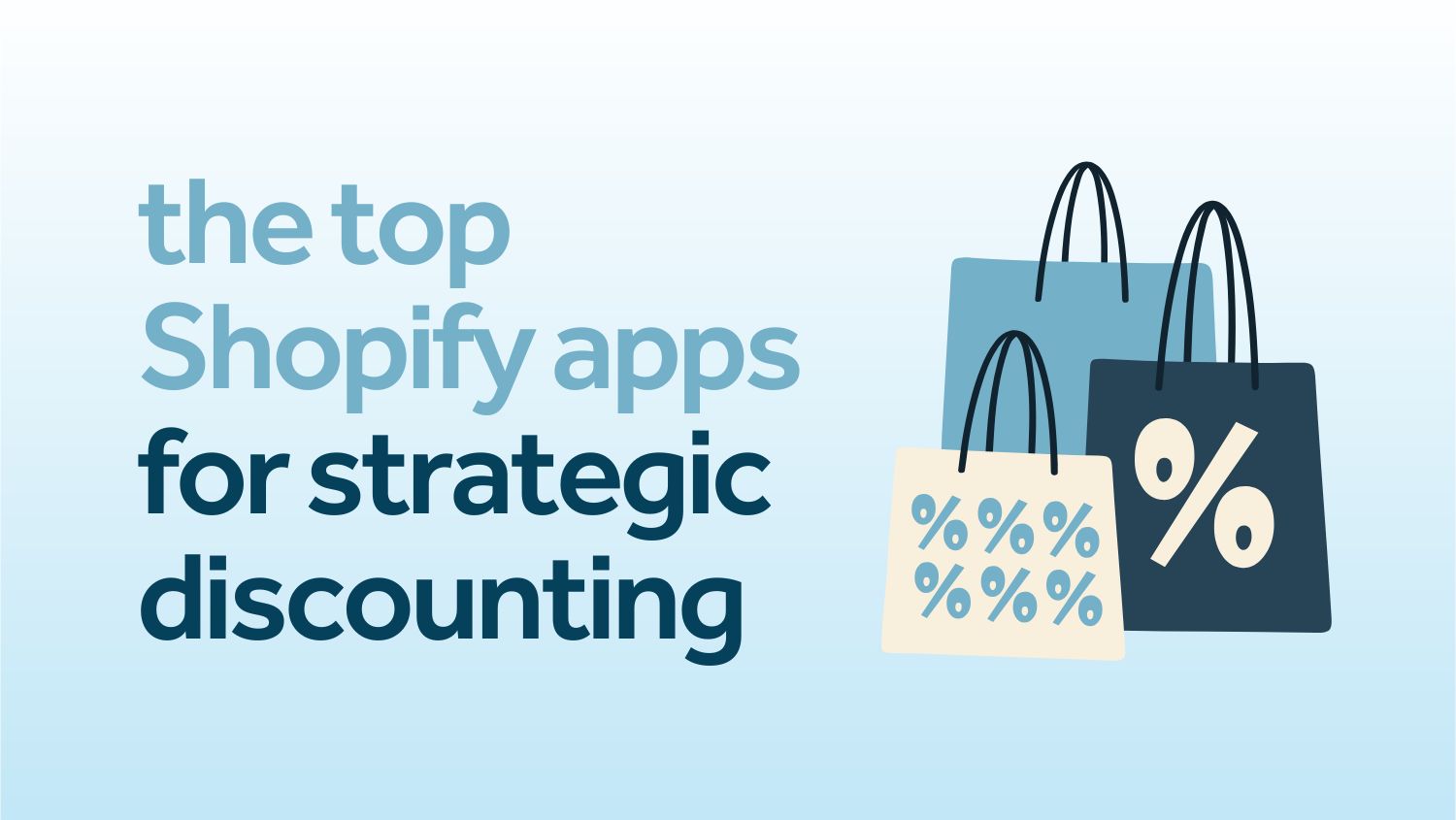2025 email discount code report: what drives conversions for Shopify brands
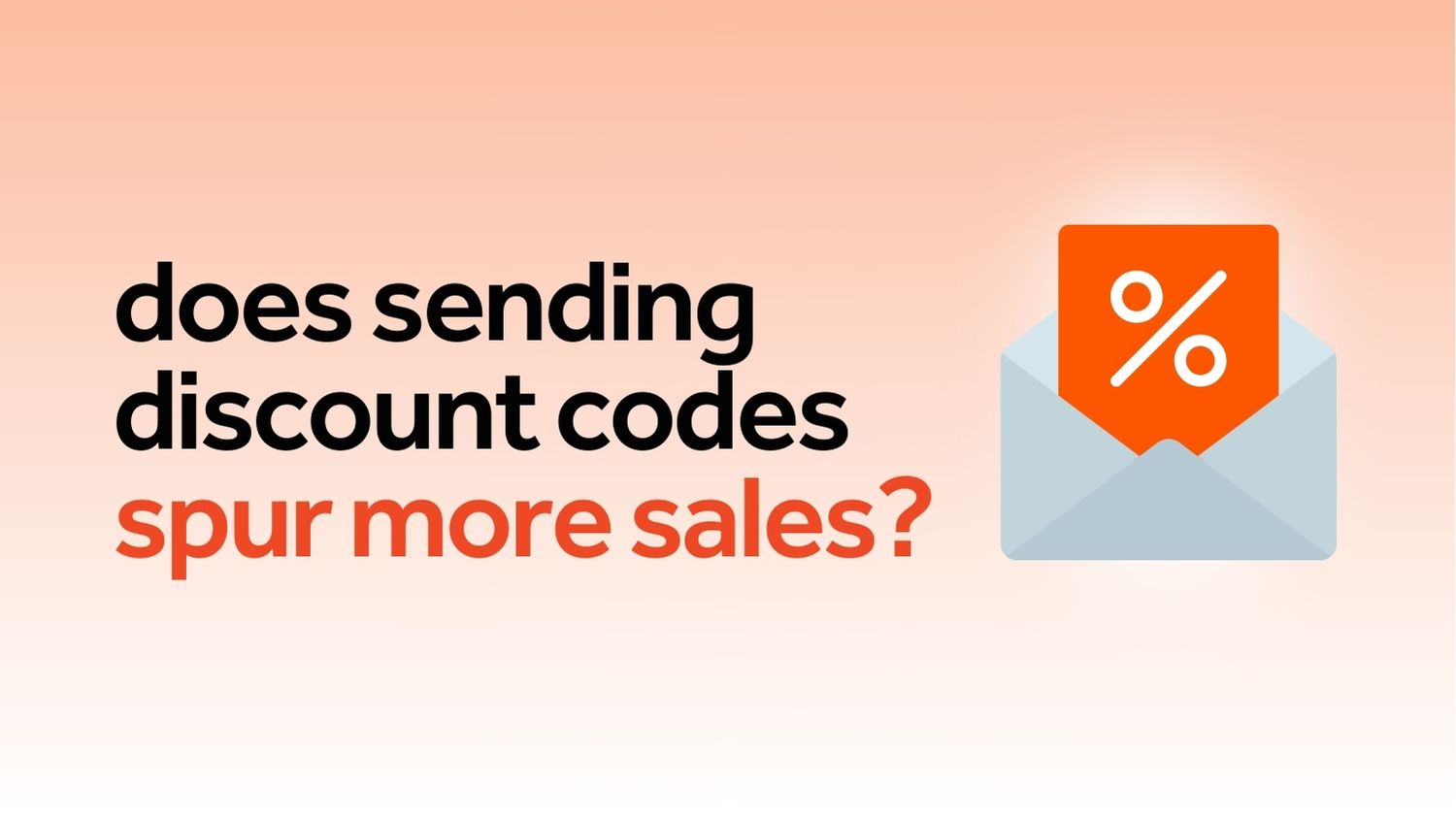
Do emails containing discount codes engage more customers and provoke more sales?
Turns out they can make a big difference. Unique discount codes in particular.
We studied tens of thousands of emails sent with Seguno. Among the top discoveries:
- Unique discount codes consistently outperform generic discount codes. Emails with unique codes had the highest click-through rate, average order value (AOV), and average selling price (ASP).
- Unique discount codes excel immediately before the BFCM rush. Unique codes exhibit superiority in November, suggesting brands should personalize offers before the big sales hit.
- Resending a discount code one time can lift revenue by up to 25%. A single resend — no matter the discount code type — can significantly increase revenue without harming your list.
Read on for all of the discount code insights we uncovered.
What the email discount code report includes
Every email newsletter falls into one of three categories:
- No code: does not contain a discount code
- Generic code: includes a general discount usable by many recipients (i.e., SPRING10)
- Unique code: includes a personalized, alphanumeric discount made for one recipient (i.e., P3E558)
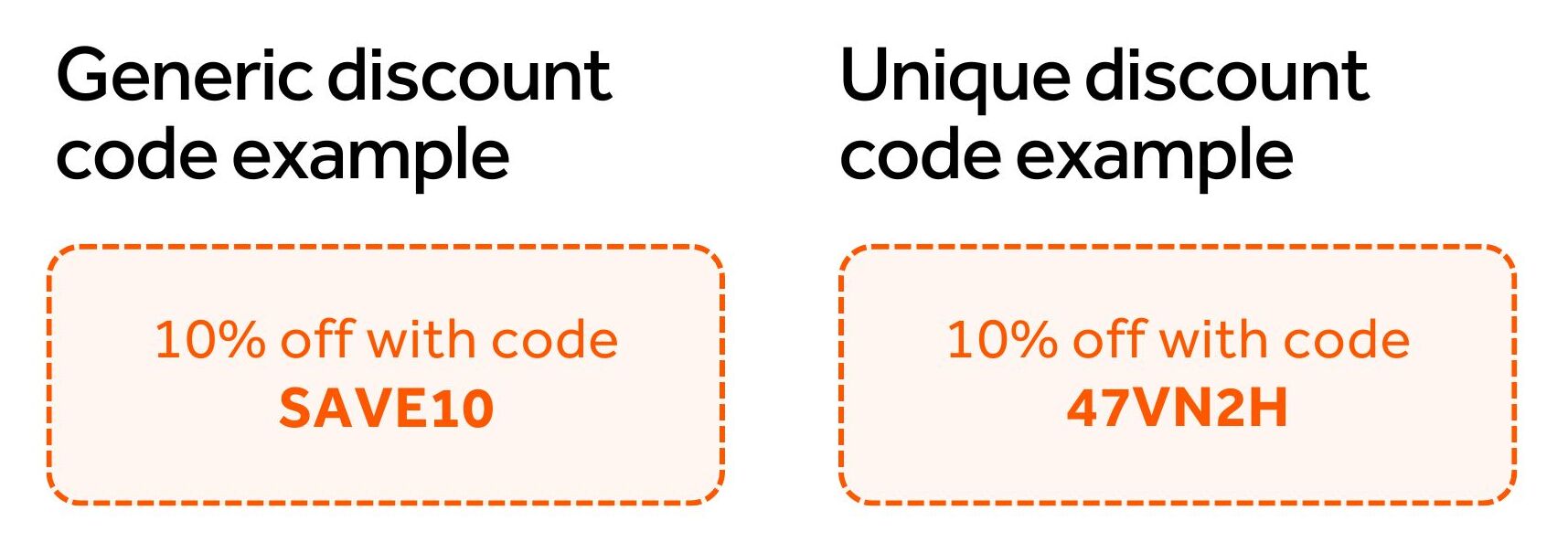
Note: “No code” does not necessarily indicate a lack of discounting. These emails may promote automatic, sitewide discounts, but are not detectable via code-based tracking.
We analyzed key performance metrics to uncover how different discount strategies influence customer engagement and bottom-line revenue:
- Click-through rate (CTR): percentage of recipients who clicked a link in the email
- Conversion rate: percentage of recipients who completed a purchase
- Average selling price (ASP): average price of items purchased in an order
- Average order value (AOV): total order value, including all items in the cart
Email conversions have fallen since 2020, but unique codes prove impactful
A five-year analysis of newsletters sent between 2020 and 2024 shows a mixed bag of results:
- Converting subscribers is becoming increasingly difficult, much like the drop in ecommerce conversion rates. Email conversion rates took a massive hit in 2021 across all email types, as the pandemic-induced online shopping surge tapered off. Though mild in comparison, the downward trend has continued.
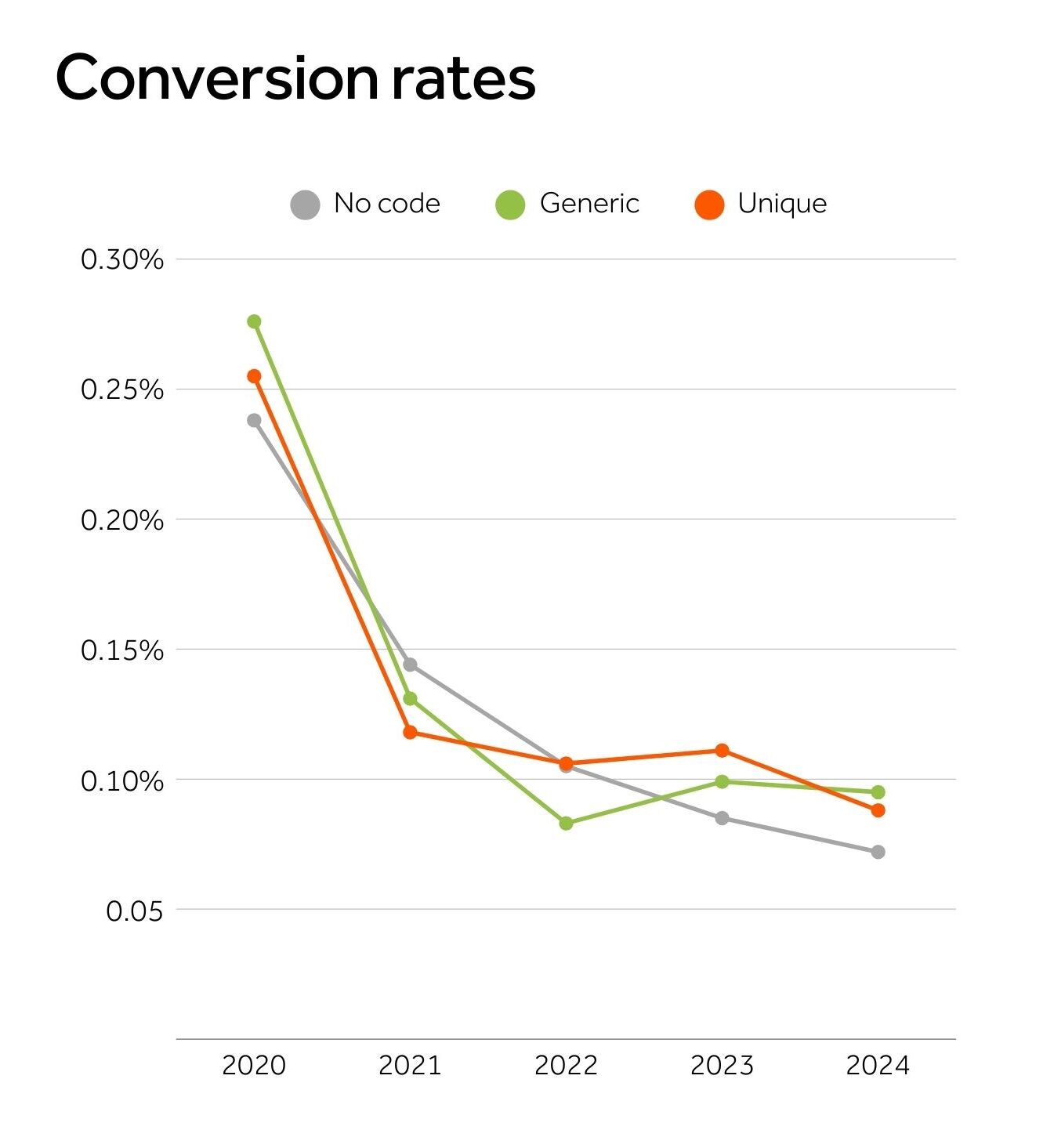
- Personalization is enticing higher engagement. Like conversion rates, CTRs have declined. But, no-code emails have experienced the steepest descent, suggesting discount codes encourage more clicks.
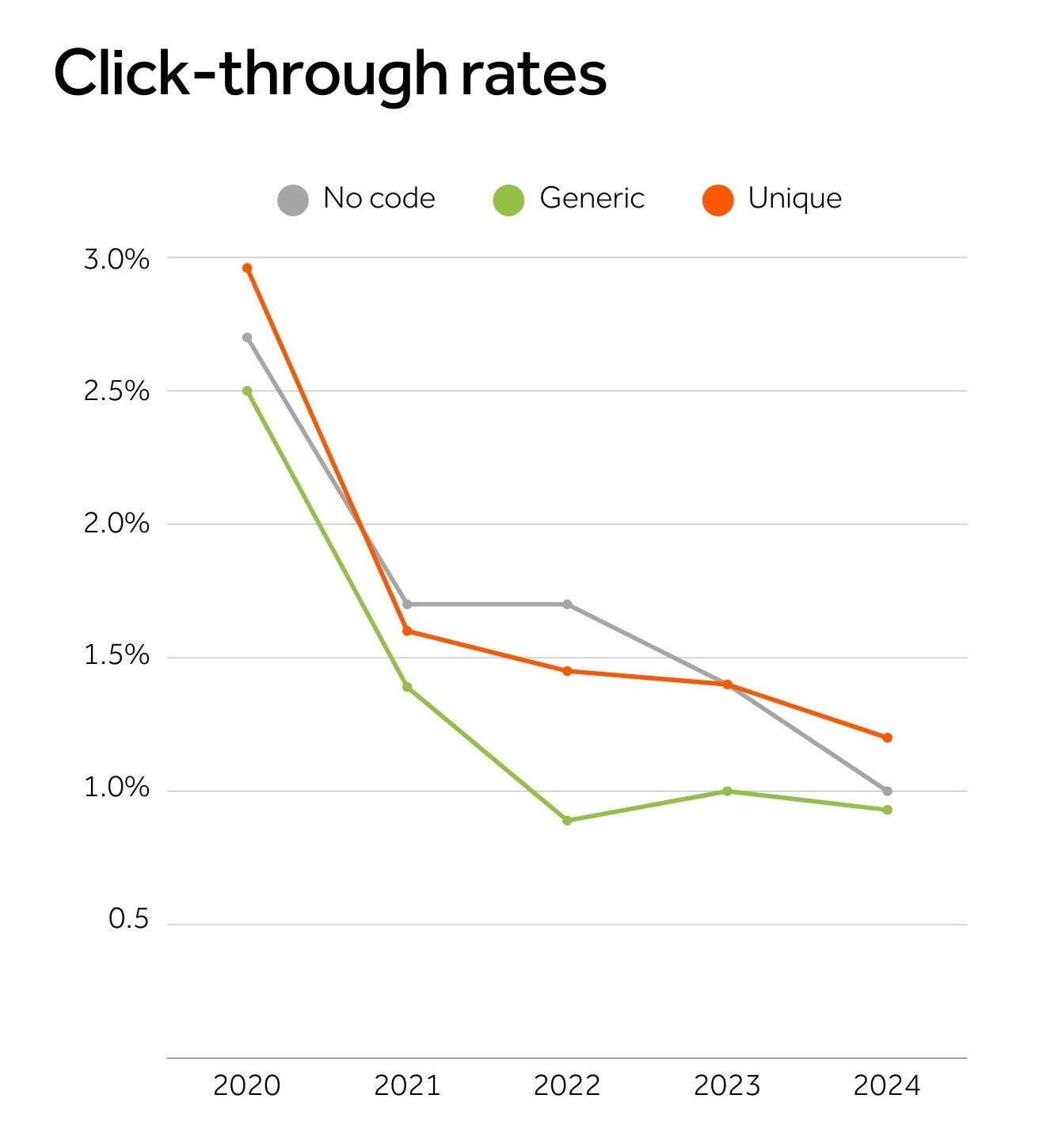
- Unique codes have the strongest upward trend in correlation with higher-priced product purchases. Generic code emails have experienced slight growth, while no-code emails have been most unsteady.
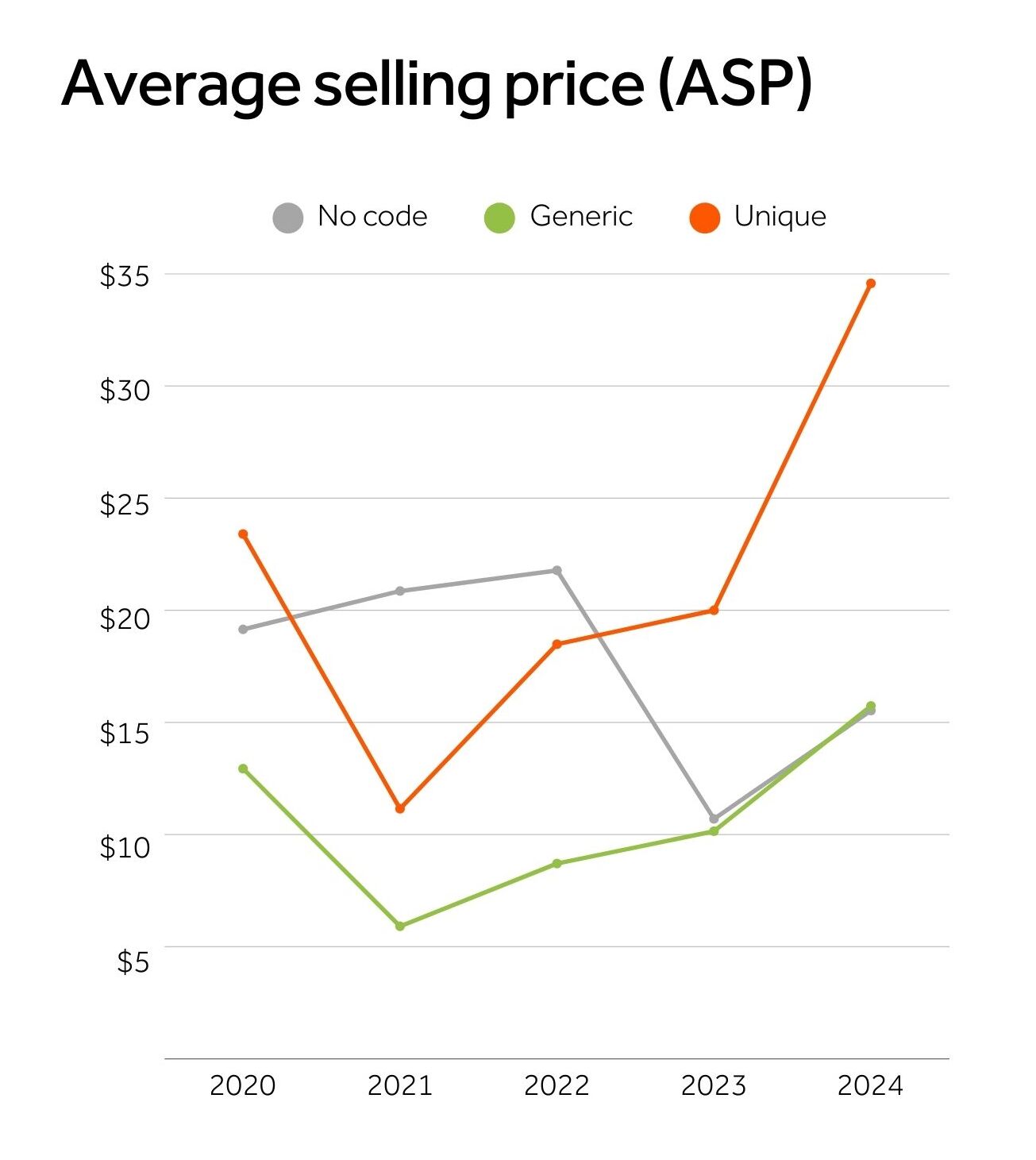
- No-discount emails historically have the highest AOV, but the tide may be turning. In 2024, unique code email AOV leaped 33% to $116.91 (a $28.70 gain from the prior year), while no-discount AOV slid 22% to $111.10 (a $24.61 decline).
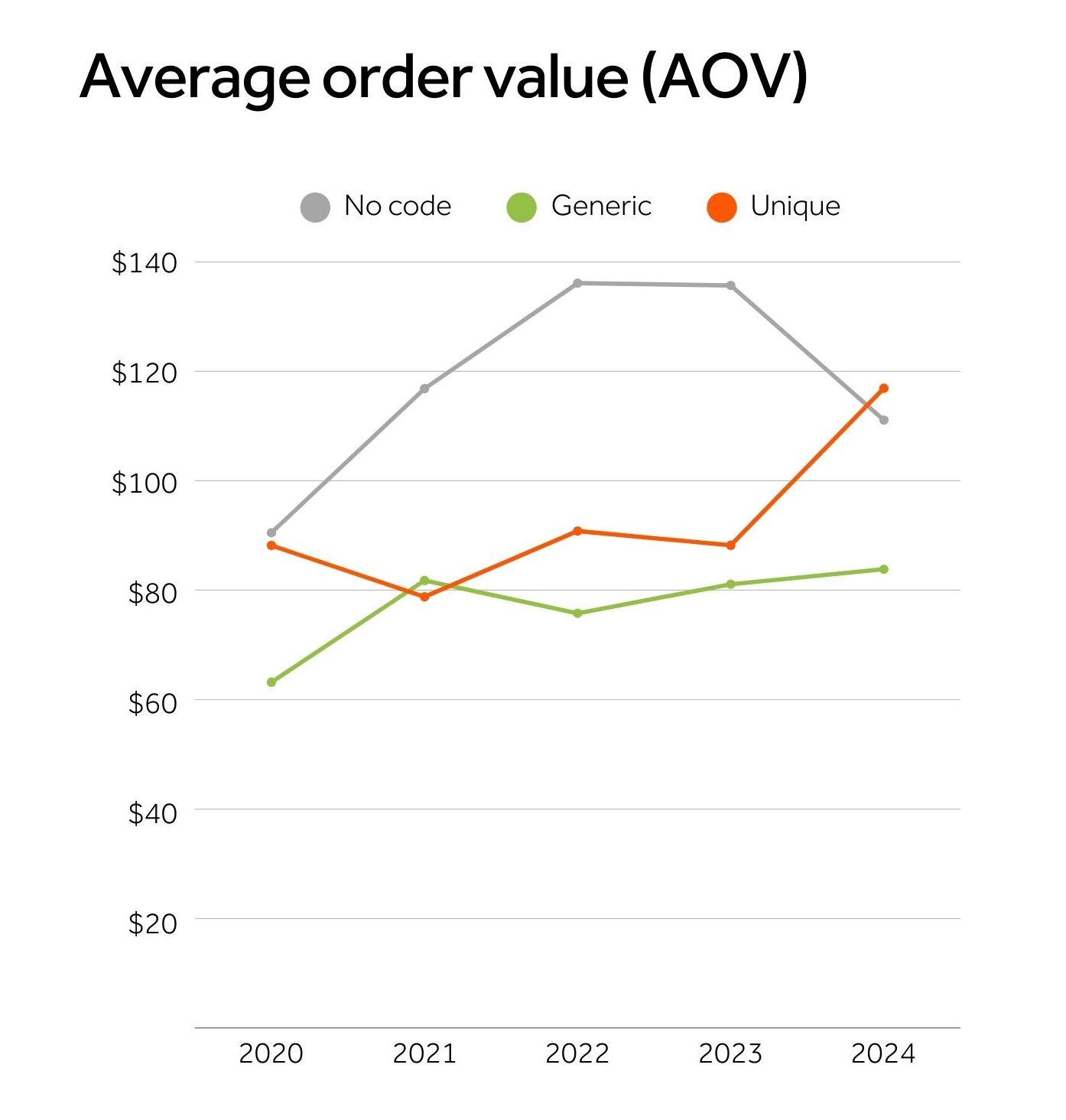
2024-2025: unique codes lift engagement and sales
Most newsletters sent between 2024 and 2025 didn’t contain codes. When they did, generic codes were nearly three times as prevalent as unique codes.
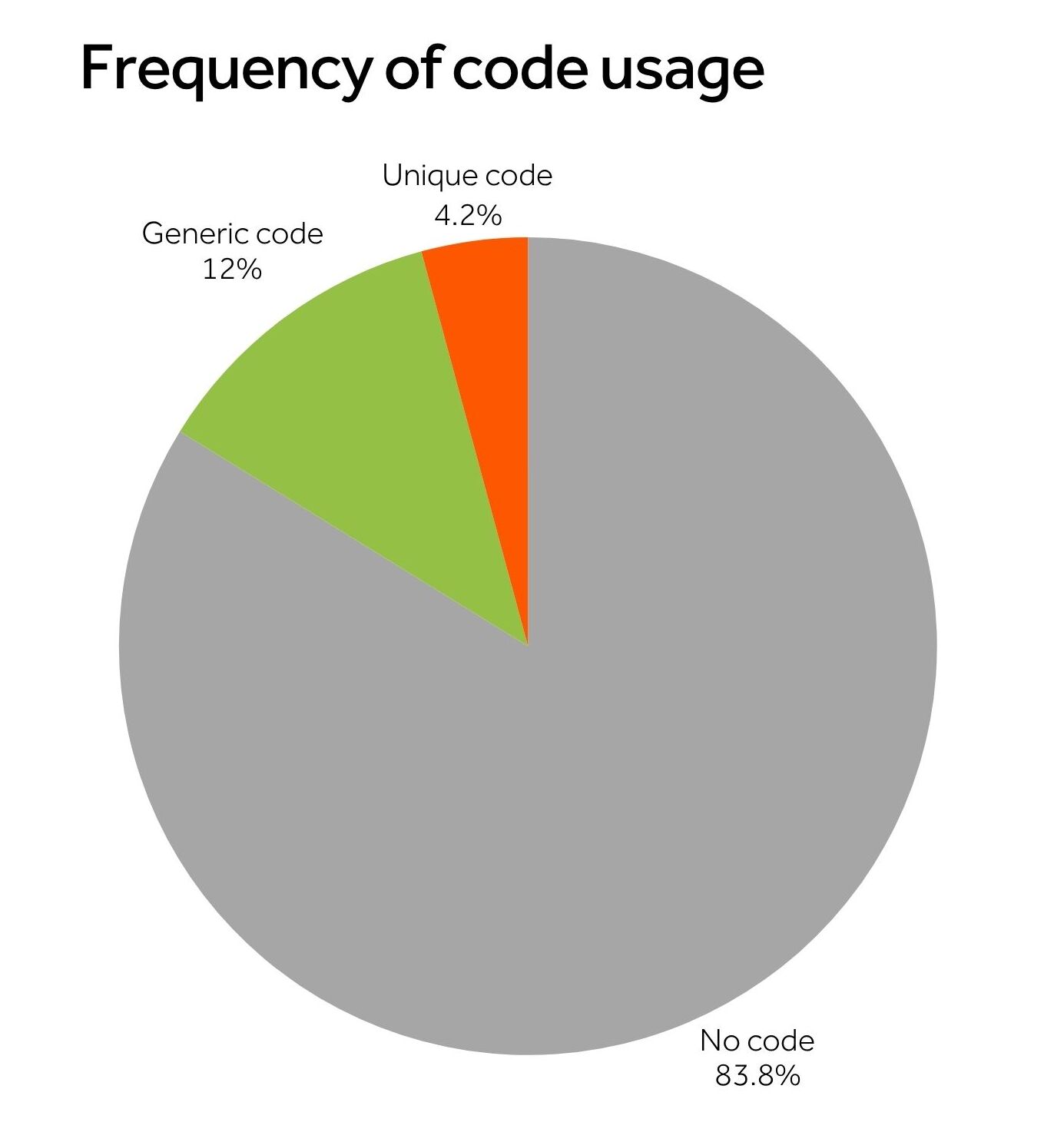
While conversion rates are practically the same whether a code is included or not, unique discount codes stand out as a powerful lever:
- The highest click-through rate. Unique codes encourage more visits to brand websites.
- The highest ASP. Unique code users purchase higher-priced products — more than double the value of other email conversions.
- The highest AOV. Customers spend more per order: 33% more versus no-discount emails and 39% more versus generic codes.
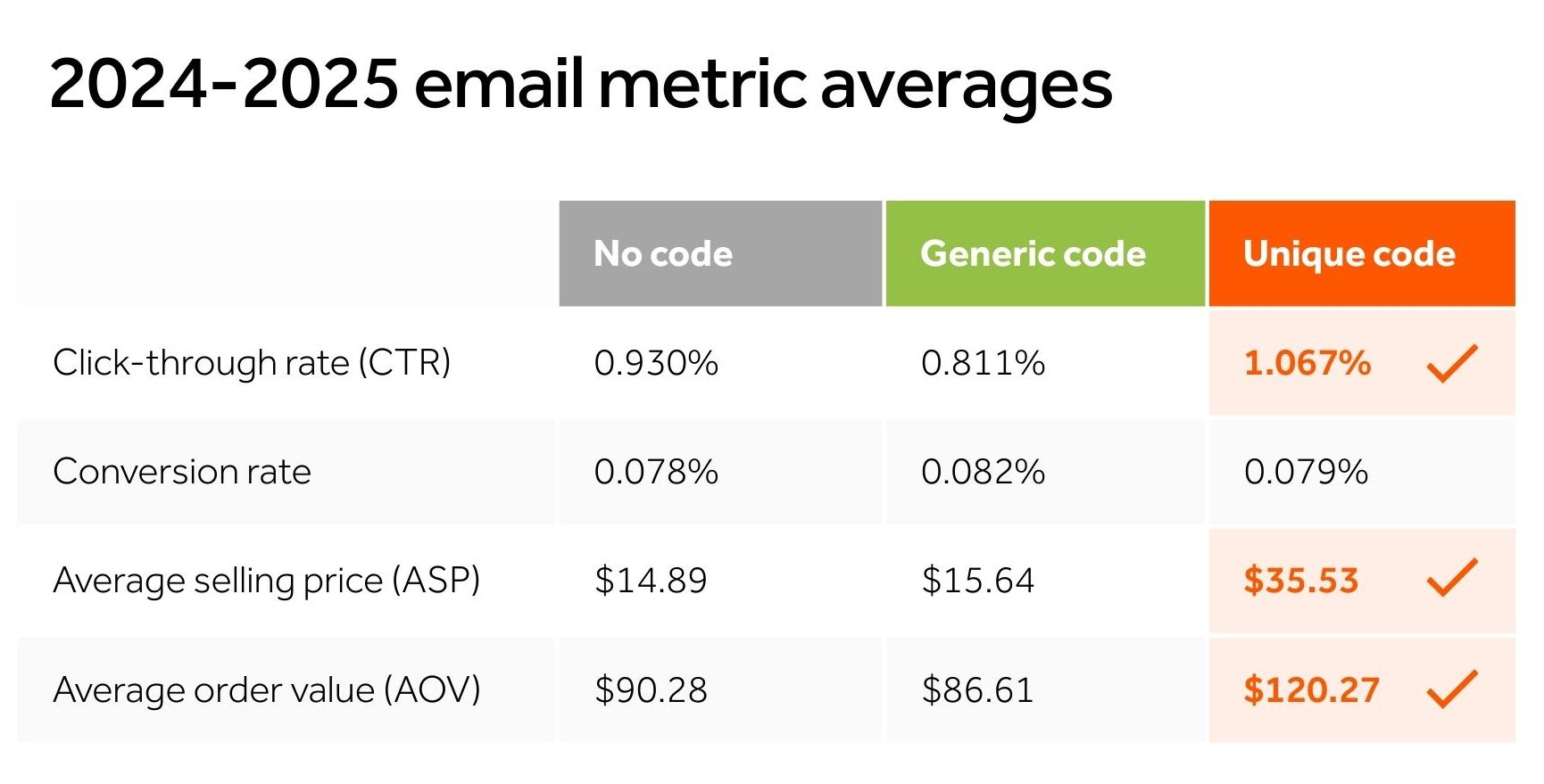
Codes flex their strength in November, pre-BFCM
Because many brands run sitewide sales during BFCM, the year-round performance gaps between emails with codes and no-code emails primarily disappear. The only leap in AOV occurred for no-code emails during BFCM week (Nov. 25 - Dec. 2, 2024).
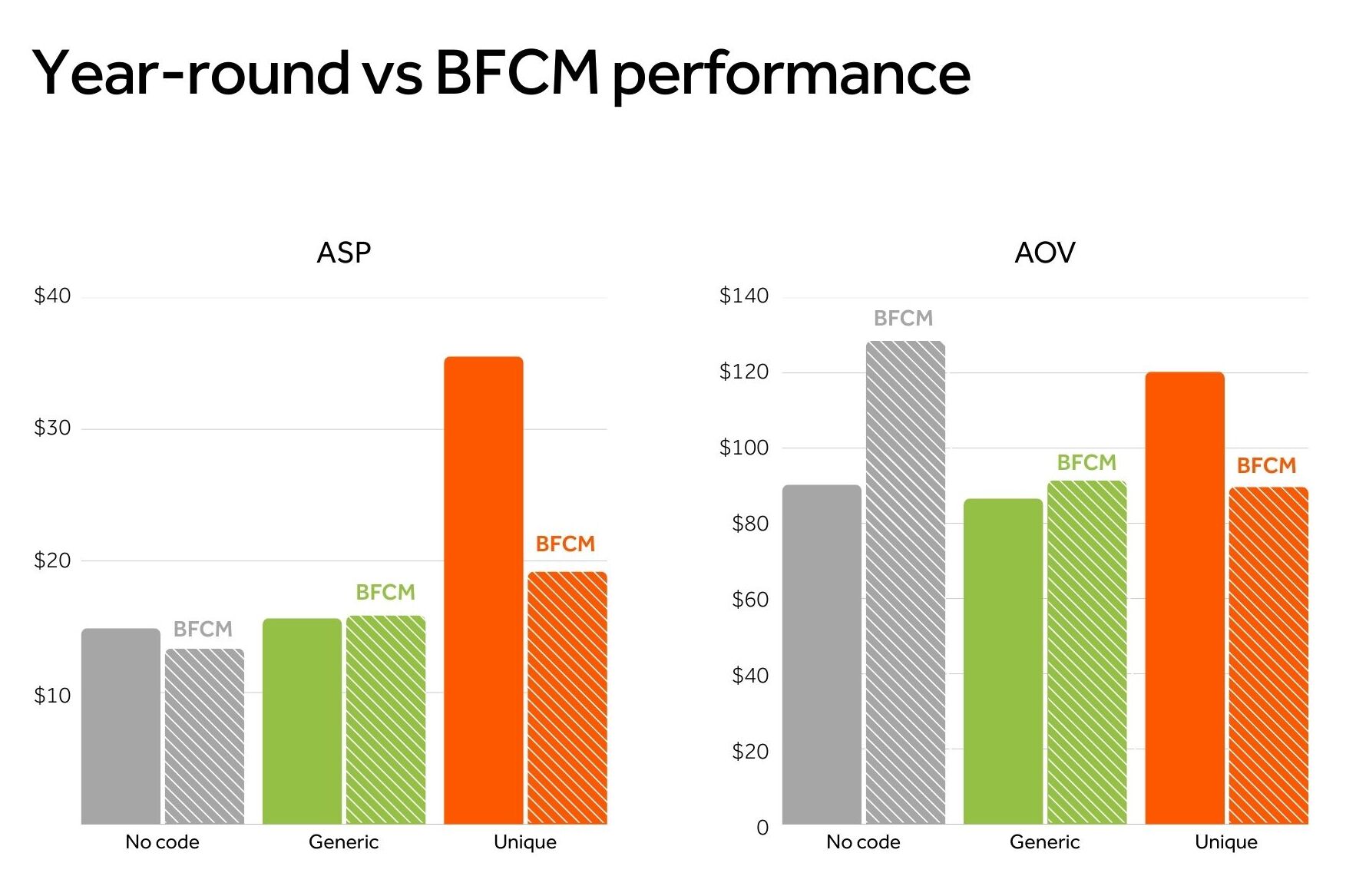
However, unique discount codes exhibit superiority immediately before BFCM, suggesting brands should personalize offers before the big sales hit:
- ASP reaches $43.25 in November, the peak for the year (it’s $25.50 for no-code emails and $17.59 for generic codes)
- Unique codes drive the highest AOV in November at $131, making them the best option for attracting high-spend customers (it’s $121.53 for no-code emails and $89.23 for generic codes)
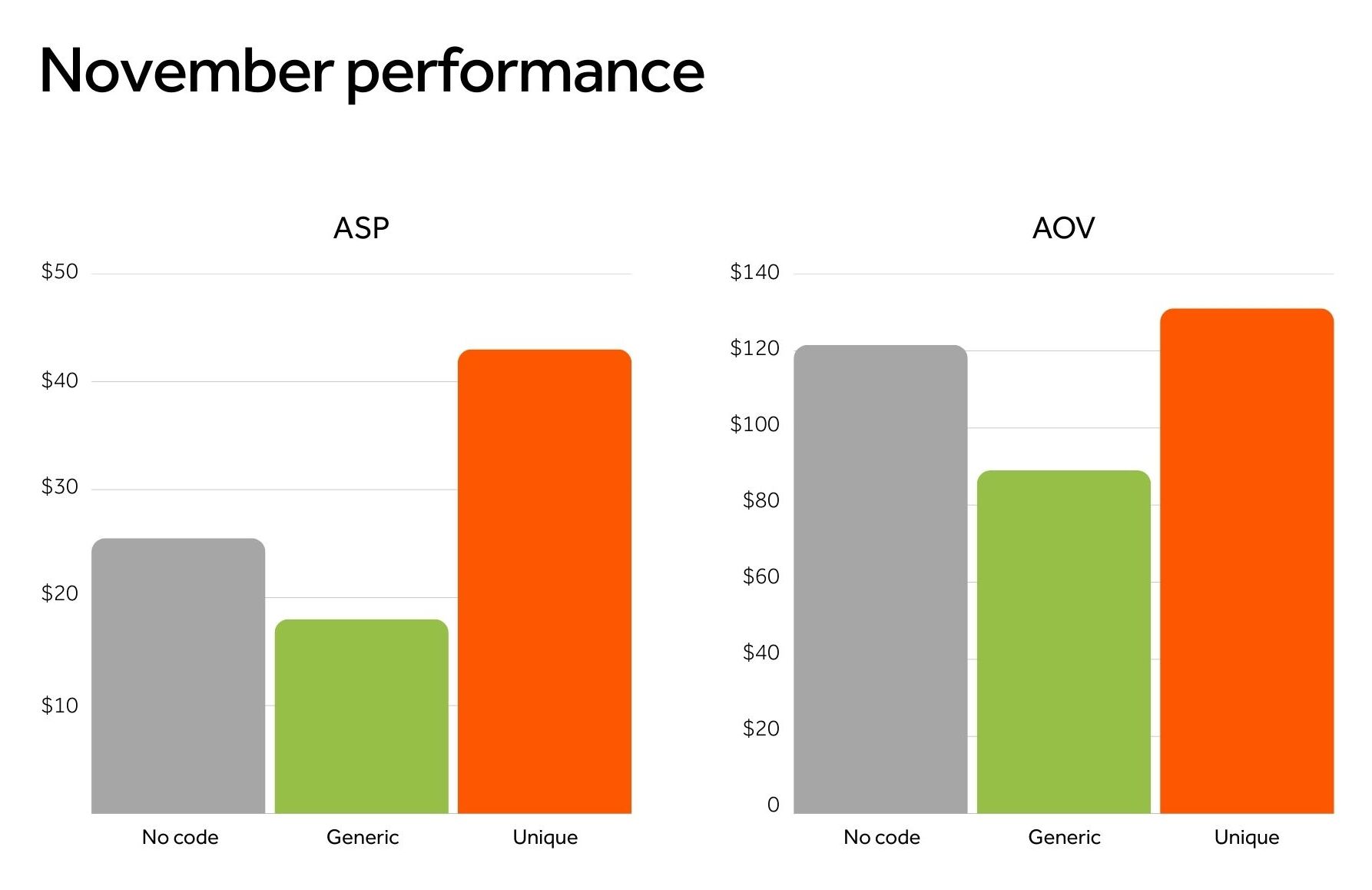
How to use 2024-2025 insights
Based on the data, here’s how we recommend using unique and generic codes.
Use unique codes to increase order value, especially in the lead-up to BFCM
Unique codes drive both higher-priced items (ASP) and larger orders (AOV). Additionally, they’re tied to the highest ASP and AOV in November, signifying customers are motivated early and willing to spend more.
Strategic move: Promote bundles or premium SKUs to take full advantage of high-intent shoppers
Use generic codes to drive fast conversions
When you need to move quickly — whether it’s a last-minute campaign or a short-term revenue push — generic codes can deliver results with less friction. Generic codes lead to slightly higher conversion rates due to ease of use.
Strategic move: Try flash sales or “24-hour only” urgency plays, but limit them to warm segments
Resending codes one time can lift revenue by 25%
Shopify brands resend generic codes in emails more frequently than unique codes. In both cases, there’s a sharp dropoff in resending a third time.

While there are many performance metrics to consider, we focused on the additional revenue for each email beyond the first send. Revenue gain captures the bottom-line business impact.
Discount codes show diminishing returns with each subsequent send, and it speeds up when entering third-send territory.
Resending can still be valuable, especially when they’re generic codes:
- Based on the average revenue generated per send (when compared to the first send), generic codes generate an additional 25.4% in revenue
- Though unique codes generate higher revenue per email on the first send than generic codes do, resending them only generates an 11% revenue lift
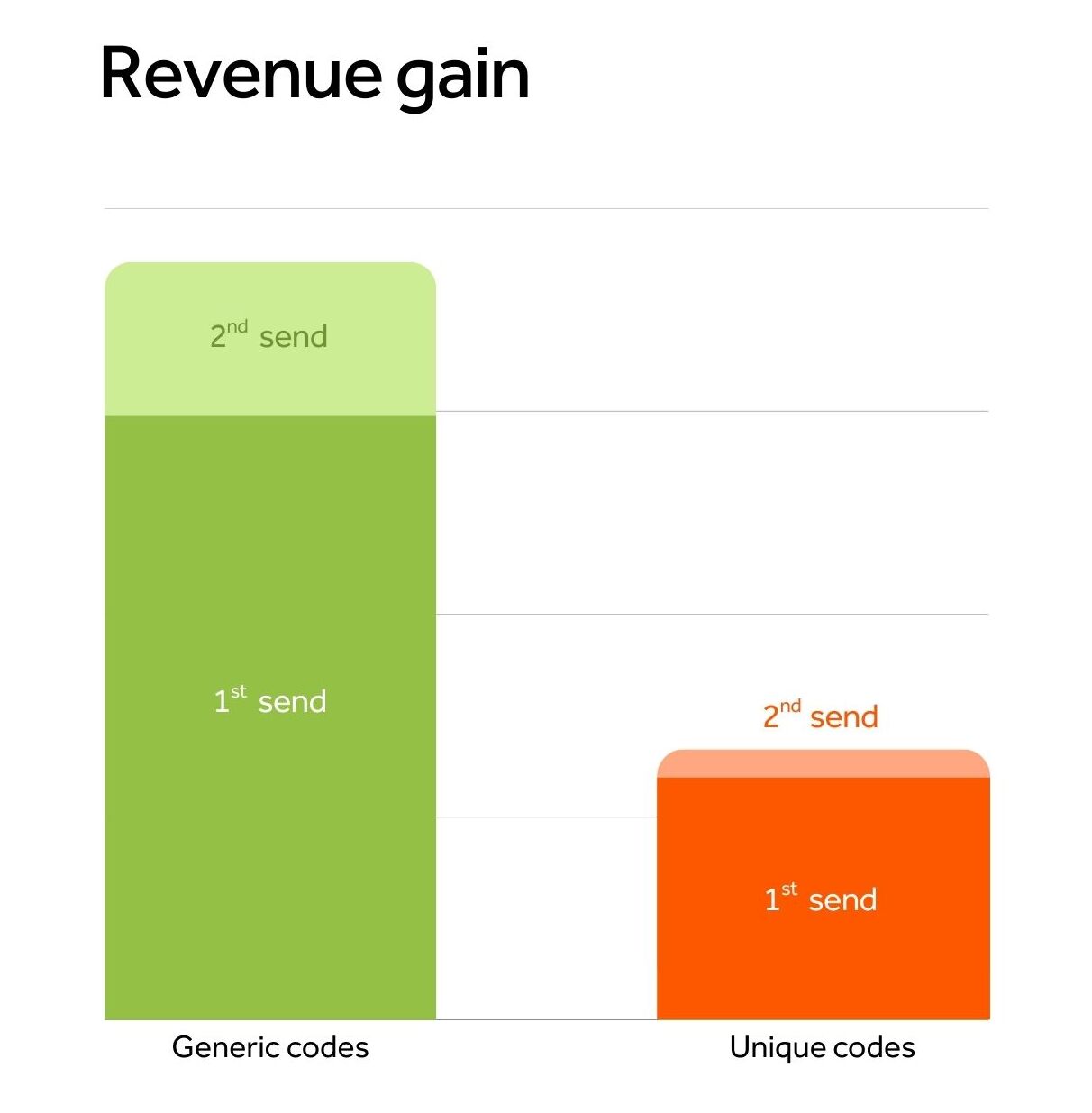
How to use the resend insights
Based on the data, we recommend different strategies when resending generic and unique codes.
Send a generic code twice to capture additional revenue
If your audience includes deal-seekers or less engaged shoppers, a second send can help widen your reach. Generic codes tend to perform well with this group, especially when they’re easy to apply and visible in a resend.
Strategic move: Resend the code 24 to 48 hours after the initial launch
Make the first send count with a unique code, knowing that follow-ups return less
When using unique codes, most of the lift happens in the initial send. A second send may offer modest returns.
Strategic move: If you opt to send again, add urgency or exclusivity
Final discounting recommendations for better email-generated sales
Email performance data makes it clear that there are perks to adding discount codes to your newsletters. And when you implement a strategy for using them, the rewards are even greater.
Use unique codes:
- When promoting bundles and VIP offers, to generate high AOV/premium sales
- During early and mid-November campaigns to spur high-value orders pre-BFCM
- To protect against coupon leaks to discount sites like Honey and RetailMeNot
Use generic codes:
- To fuel flash promos and quick wins
- For maximizing revenue with a second send
It’s easy to include either type when using Seguno Email. With one click, you can turn a Shopify discount into a unique code and send it in newsletters and across email automations. Seguno then automatically applies the discount code to the cart when clicking on any email link.
Methodology
We examined 65,055 newsletters sent by Shopify brands using Seguno Email. All shops operate in USD. The analysis represents averages across ecommerce categories, including high-ticket and low-cost goods.
Except where noted, the data range is May 14, 2024, to May 14, 2025.

create, manage, and track your email marketing—without leaving Shopify.
Seguno is the top-rated email solution built exclusively for Shopify. Grow your sales with high-performing newsletters, email automation campaigns, and integrations with Facebook, Instagram, banners, pop-ups and more. Build and send engaging emails in our easy-to-use editor and take email creation to the next level with our Canva integration. Automate your email marketing and drive more revenue with welcome campaigns, checkout abandonment, post-purchase automations, tag triggers and more.

get email marketing tips, resources, and industry insights to help your Shopify store grow.




